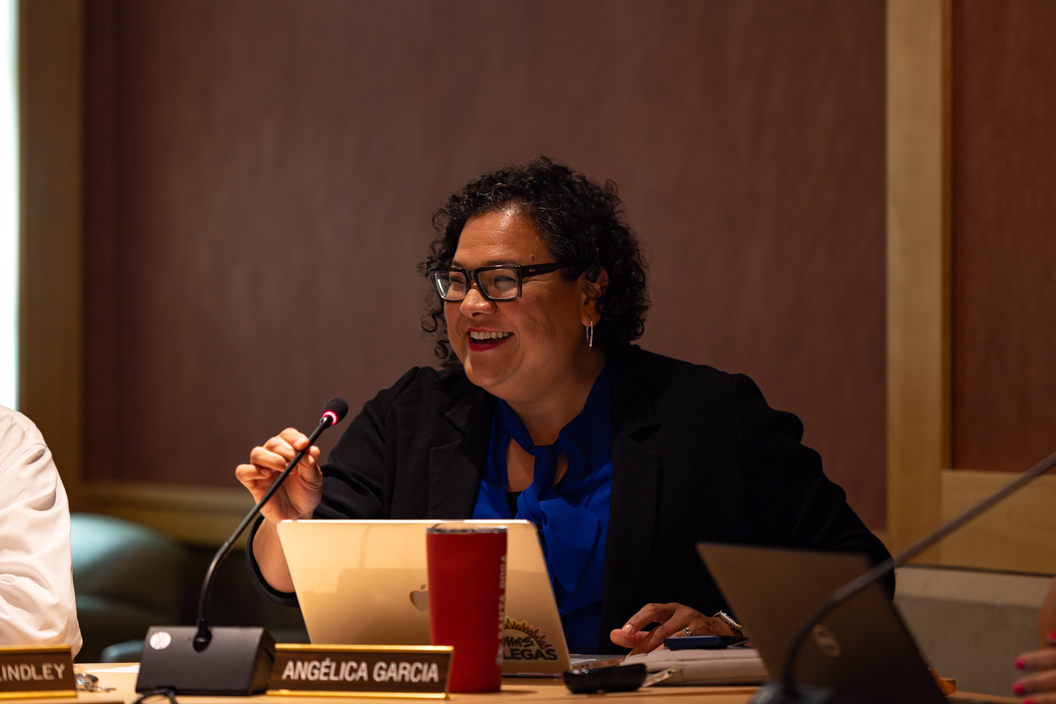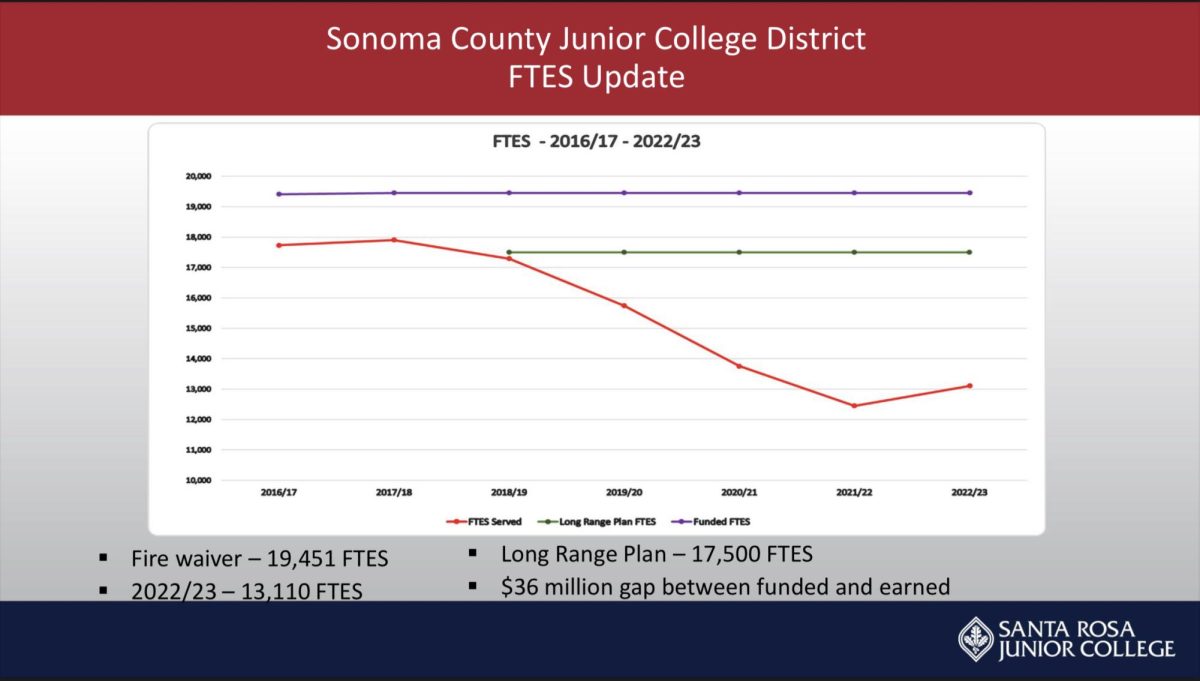Santa Rosa Junior College Board of Trustees focused on the drop in student population and ridership on local public transportation, which has yet to reach pre-pandemic levels at their Sept. 12 meeting.
Vice President of Finance and Administrative Services Kate Jolley delivered a presentation of the proposed budget for Santa Rosa Junior College for the upcoming year, wherein she said that Full-Time Equivalent Students (FTES) enrollment is nearly 25% less than it was before the COVID-19 pandemic, currently at 13,000 FTES compared to 17,000 FTES enrollments in 2018-2019. Student enrollment has increased from the pandemic low of 12,000 FTES, but is far from the 17,500 goal.
Another setback that began during the pandemic is the student ridership program. Ridership, students using public transportation, has gone down across the board and has still yet to return to pre-pandemic levels according to Manager of Student Support Programs Deb Ziccone, though it has expanded to new areas with the Clipper BayPass Pilot Program that gives SRJC students free ridership on the San Francisco Bay Ferry, the SMART Train and Muni, San Francisco’s bus and metro system. Across the Bay Area, 2 million rides have been taken using the BayPass program. A recommendation was made by the heads of the program that the board approve a continuance of the program through Fall semester 2028, which would give the program another five years of operation.
Kate Jolley also delivered an update on construction funded by the Measure H bond. Construction is underway at the SRJC Roseland campus and is expected to continue through December of 2025. Construction on Tauzer Gymnasium is expected to begin in November. Scholars Drive will be paved later this month. Instruction is set to begin in the Lindley Center for STEM education by Spring 2024.
SRJC President Dr. Angélica Garcia delivered her first President’s Report since taking on the position. She said the SRJC has an unduplicated headcount of over 21 thousand students currently enrolled, which is an increase from last year. 14% of the JC’s students are also brand new this semester. According to Dr. Garcia, the school is still primarily for part-time students. While the school has yet to reach pre-pandemic enrollment levels, Dr. Garcia had a positive outlook, saying that the increases were “testament to the collaborative and integrated efforts from all areas throughout the district. There has been a complete hands-on approach at SRJC.”




